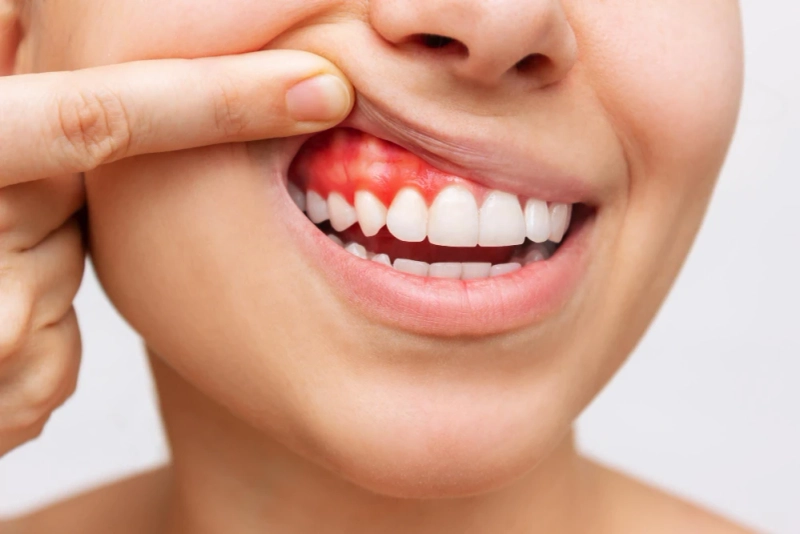Gum disease, also known as periodontal disease, is a common but often underestimated dental condition that can have serious implications for your oral health and overall well-being. The early stages of gum disease can be challenging to detect, making it important to be proactive in recognizing the subtle signs and seeking appropriate treatment. This article aims to guide you in recognizing and effectively treating hard-to-spot gum disease.
Recognizing the Signs of Gum Disease
Bleeding Gums:Bleeding gums are one of the early indications of gum disease, especially during brushing or flossing. Healthy gums should not bleed easily. If you notice persistent bleeding, it's important to consult a dentist.
Receding Gums:Gum recession is a common indicator of gum disease. If your teeth appear longer than before or if you can see the roots of your teeth, your gums may be receding due to gum disease.
Persistent Bad Breath:Foul breath that doesn't improve with regular oral hygiene may indicate gum disease. This is caused by the accumulation of bacteria in the gums.
Tender or Swollen Gums:
If your gums are tender, swollen, or red, it may be a sign of inflammation caused by gum disease. Healthy gums should be pink and firm.
Loose Teeth or Changes in Bite:Gum disease can lead to loose teeth or changes in your bite alignment. If you notice these changes, it's crucial to seek professional dental help.
Pus Between Teeth and Gums:The presence of pus or discharge between your teeth and gums is a clear sign of infection and gum disease. If you observe this, consult a dentist immediately.
Treating Hard-To-Spot Gum Disease
Improved Oral Hygiene:Regular and proper oral hygiene is the foundation of gum disease prevention and treatment. Brush your teeth twice a day, floss daily, and use an antiseptic mouthwash to reduce bacteria, says a dentist in Shepparton in his latest research about the topic of spot gum diseases.
Professional Dental Cleaning:Regular dental cleanings by a dental hygienist are crucial to remove plaque and tartar build-up that regular brushing and flossing may miss.
Scaling and Root Planning:For more advanced cases of gum disease, a deep cleaning procedure known as scaling and root planning may be necessary. This involves removing tartar and smoothing the roots to help the gums reattach to the teeth.
Antibiotics:In some cases, your dentist may prescribe antibiotics to help control bacterial infections associated with gum disease.
Surgical Intervention:In advanced cases, surgical procedures such as gum grafts, bone grafts, or flap surgery may be necessary to restore gum health and prevent further damage.
Lifestyle Changes:Maintaining a healthy lifestyle, including a balanced diet, regular exercise, and avoiding tobacco products, can contribute to preventing and managing gum disease.
Conclusion
Gum disease is a common dental issue that, if neglected, can have negative effects. Recognizing the early signs and seeking timely treatment is essential for maintaining good oral health. Regular dental check-ups, diligent oral hygiene, and a healthy lifestyle are key components of preventing and managing gum disease. If you suspect you may have gum disease, don't hesitate to consult a dental professional for a thorough evaluation and appropriate treatment. Your smile and overall health depend on it.


